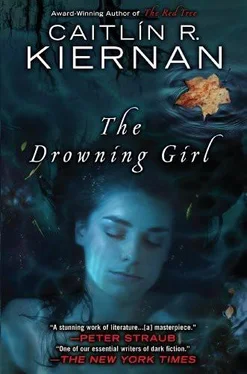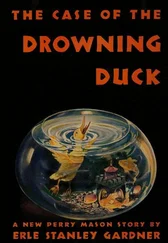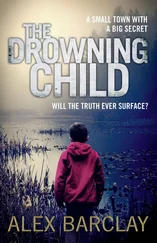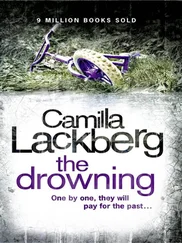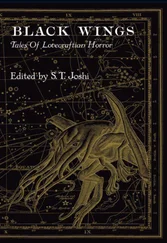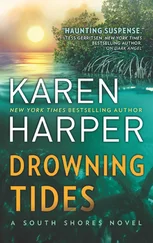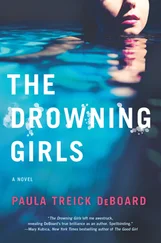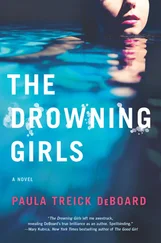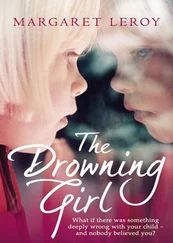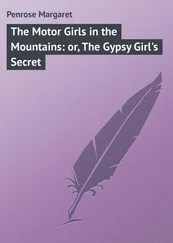Caitlín Kiernan - The Drowning Girl
Здесь есть возможность читать онлайн «Caitlín Kiernan - The Drowning Girl» весь текст электронной книги совершенно бесплатно (целиком полную версию без сокращений). В некоторых случаях можно слушать аудио, скачать через торрент в формате fb2 и присутствует краткое содержание. Год выпуска: 2012, ISBN: 2012, Издательство: Roc / New American Library, Жанр: Фэнтези, на английском языке. Описание произведения, (предисловие) а так же отзывы посетителей доступны на портале библиотеки ЛибКат.
- Название:The Drowning Girl
- Автор:
- Издательство:Roc / New American Library
- Жанр:
- Год:2012
- ISBN:978-0-451-46416-3
- Рейтинг книги:5 / 5. Голосов: 1
-
Избранное:Добавить в избранное
- Отзывы:
-
Ваша оценка:
- 100
- 1
- 2
- 3
- 4
- 5
The Drowning Girl: краткое содержание, описание и аннотация
Предлагаем к чтению аннотацию, описание, краткое содержание или предисловие (зависит от того, что написал сам автор книги «The Drowning Girl»). Если вы не нашли необходимую информацию о книге — напишите в комментариях, мы постараемся отыскать её.
The Drowning Girl — читать онлайн бесплатно полную книгу (весь текст) целиком
Ниже представлен текст книги, разбитый по страницам. Система сохранения места последней прочитанной страницы, позволяет с удобством читать онлайн бесплатно книгу «The Drowning Girl», без необходимости каждый раз заново искать на чём Вы остановились. Поставьте закладку, и сможете в любой момент перейти на страницу, на которой закончили чтение.
Интервал:
Закладка:
Before I sat down to write this, I googled Fecunda ratis and looked at some images on the web, because I didn’t want to rely on my unreliable memories. The painting doesn’t upset me the way it did that August day at the Bell Gallery. Too much has happened, and the sculptures and paintings of Albert Perrault, for all their dreadfulness, pale by comparison. But, like I’ve said, mostly all in gray, and then the red smudge near the center. The smudge forms a sort of still point, or a nexus, or a fulcrum. It’s the child’s wool baptismal tunic, and it’s the only thing she’s wearing. She’s on her hands and knees, her head bowed so that her face is hidden from view. There’s nothing but a wild snarl of matted hair and the red tunic, which, when the painting is considered as a whole, seems to me cruel and incongruent. The girl is surrounded by a circle of dark, hulking forms—the wolves—and the wolves, in turn, are sitting within an outer circle of standing stones, a looming megalithic ring.
The wolves are rendered so indistinctly that I might have mistaken them for something else, if I hadn’t first read the card on the wall. I might have looked at those great, shaggy things squatting there on their haunches, lewdly, hungrily watching over the girl. And I might have mistaken them for bears. Bears or even, I don’t know, oxen. You can’t tell from the painting if the wolves are about to eat the girl, or if they’re keeping her safe. You can’t tell if they’re marveling at what a strange wolf she is, or thinking about how they’ve never made love to a human woman and maybe that would be an interesting change of pace.
But the very worst part of the painting was a strip of rice paper worked into the lower left-hand corner of canvas. Printed on the paper were the words Nobody’s ever coming for you.
I had it in my head, when I sat down with my apple and my Lorna Doones, that I would be able to write in detail about all the pieces that made up The Voyeur of Utter Destruction (in Hindsight), or at least those I saw before I started feeling sick and we had to leave the gallery. Night in the Forest , which was very much like Fecunda ratis , only more so. And 1893 and Sudden Fear in Crowded Spaces . A series of rusty metal cages collectively titled Breadcrumbs , each cage holding a single cobble inside, each stone engraved with a single word. And the grotesque pinwheel spread out at the center of it all, Phases 1–5 , a series of sculptures portraying a woman’s transformation into a wolf. Not just any woman, but the murdered and dismembered corpse of Elizabeth Short, known to most of the world as “the Black Dahlia.” I had nightmares about those sculptures for weeks. Sometimes, I still do. I was going to describe all of this to the best of my abilities. But now I think it’s better if I don’t. Maybe later into the story I will, when doing so might become unavoidable, but not now.
“So,” Imp typed, “I’ve made my beginning, however arbitrary and disjointed it may be. I’ve begun my ghost story, and I’m going to pretend there’s no turning back now.”
It’s a lie, but I’m going to pretend, regardless.
In the end, it may or may not all add up to something coherent. I won’t know until I’ve found the end.
Me. Rosemary Anne. Caroline. Three crazy women, all in a row. My mother’s suicide and my grandmother’s suicide. Taking away words so that scary things are less scary, and leaving behind words that no longer mean what they once did. “The Little Mermaid.” The cloudy day I met Abalyn. Dead sparrows and mice trapped inside stoppered bottles. The Drowning Girl , painted by a man who fell off a horse and died. Fecunda ratis , painted by a man who fell off a motorcycle and died. A man who took the surname of the Frenchman who is often credited with having first written down the tale of “Little Red Riding Hood,” and then proceeded to create horrific works of art based on that same fairy tale. Which happens to be my least favorite fairy tale of all. Jacova Angevine and the Open Door of Night, which I’ll come to later. Contagious hauntings and pernicious memes. The harm we do without meaning to do any harm at all.
A dark country road in eastern Connecticut. Another dark road beside a river in Massachusetts. A woman who called herself Eva Canning, who might have been a ghost, or a wolf, or maybe a mermaid, or possibly, most likely, nothing that will ever have a name.
These are the sum of the notes my mother told me I should make, so I won’t forget that which has made a strong impression upon me. This is my apology to Abalyn, even though I know she’s never going to read it.
This might be my pocket full of stones.
“That’s enough for now,” Imp typed. “Get some rest. It’ll still be here when you come back.”
2
“And what about this business with chapters?” Imp typed. “If I’m not writing this to be read—which I’m most emphatically not—and if it’s not a book, as such, then why is it that I’m bothering with chapters? Why does anyone bother with chapters? Is it just so the reader knows where to stop and pee, or have a snack, or turn off the light and go to sleep? Aren’t chapters a bit like beginnings and endings? Arbitrary and convenient constructs?” Nonetheless, she typed the Arabic numeral two precisely seventeen single-spaced lines down a fresh sheet of typing paper.
October is slipping away around me. I’ve spent several days now, days filled with work and not much else, trying to decide when and how to continue the ghost story. Or whether I should continue the ghost story. Obviously, I decided that I would. That’s another sort of being haunted: starting something and never finishing it. I don’t leave paintings unfinished. If I start reading a book, I have to finish it, even if I hate it. I don’t waste food. When I decide to go for a walk, and I’ve planned the route I’m going to take, I insist upon taking the entire walk, even if it starts snowing or raining. Otherwise, I have to contend with that unfinished thing haunting me.
Before I met Abalyn Armitage, I’d never played a video game. I didn’t even own a computer. I also didn’t know much about transsexuals. But I’ll get back to that later. I’ll write about the video games now, because it was one of the very first subjects that she and I talked about that night. We managed to get all her things from the place on Wood Street where she no longer lived, because her ex-girlfriend had evicted her when they broke up, to my place on Willow Street before it started raining. It did start raining, which proved I’d been sensible after all, if somewhat premature, bringing the umbrella along and wearing my galoshes. We got her stuff back to my place, and up the stairs to my apartment. Most of it we piled in my front parlor, which was pretty much empty anyway.
“You’re the first person I’ve ever heard describe a room in their house as a parlor,” Abalyn said. She was sitting on the floor, sorting through her CDs, as if to be sure something hadn’t been left back at her old apartment.
“Am I?”
She watched me a moment, then said, “If you weren’t, I’d never have said you were.”
“Fair enough,” I replied, and then asked if she’d like a cup of tea.
“I’d really prefer coffee,” she said, and I told her that I didn’t drink coffee, so I couldn’t make her any. She sighed and shrugged. “Never mind,” she said, then added, “I’ll have to rectify that tout de suite . I can’t live without coffee. But thanks, anyway.”
I was only in the kitchen maybe ten minutes, but by the time I got back she’d already plugged in her television and was busy hooking up one of the gaming consoles. I sat on the sofa and watched her and sipped my tea. It was sweet, but there was no lemon, because I hadn’t thought to buy one the last time I’d gone to the market.
Читать дальшеИнтервал:
Закладка:
Похожие книги на «The Drowning Girl»
Представляем Вашему вниманию похожие книги на «The Drowning Girl» списком для выбора. Мы отобрали схожую по названию и смыслу литературу в надежде предоставить читателям больше вариантов отыскать новые, интересные, ещё непрочитанные произведения.
Обсуждение, отзывы о книге «The Drowning Girl» и просто собственные мнения читателей. Оставьте ваши комментарии, напишите, что Вы думаете о произведении, его смысле или главных героях. Укажите что конкретно понравилось, а что нет, и почему Вы так считаете.
